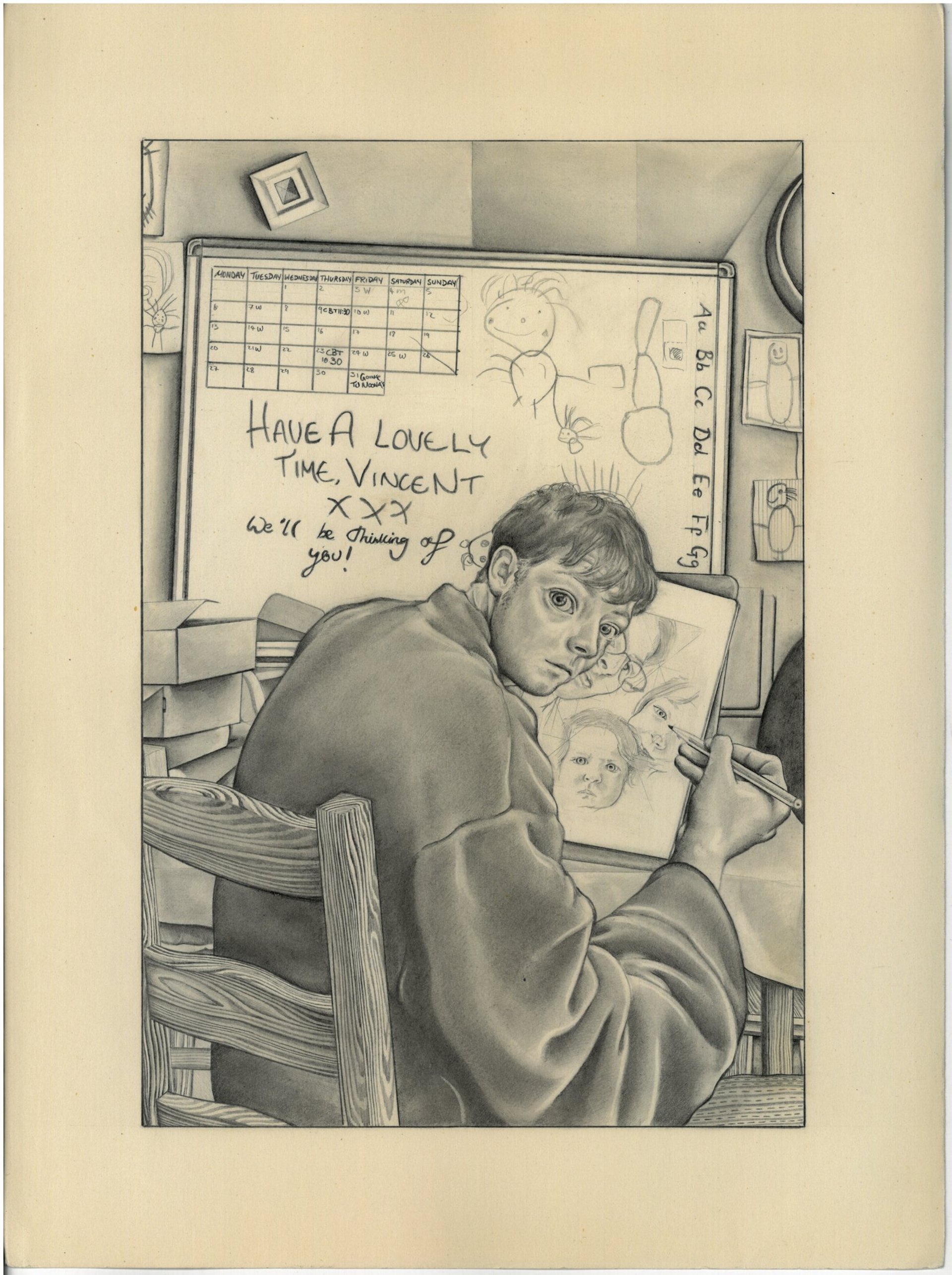
HappyHouse
2023 - 2024
HappyHouse is a series of sixteen drawings that attempt to avowedly document the prosaic happenings within and around the six rooms that comprise an incommodious privately rented terrace. They commemorate those moments of unobserved amity, of affection without scrutiny, of intimacy without judgement.
The series begins with the advent of the birth of the artists second daughter and charts the growth and development of his family over the subsequent eighteen months. Born out of an urge to track the poetic noteworthiness and numinous phenomena of everyday life, these images seek to distil the rhythms of domesticity and the delicate emotional instances contained within that sacred space of things - the family space. The spectator is encouraged to trust the incorporeal qualities of the household routines, that they in some way possess a transcendental significance which ennobles the participants.
There is an inescapable and unceasing sense of life being lived within the household that at times can seem implacable as it animates and reassures the brutal evidence of one's own primal behaviours. There is something valuable in exploring this; the manner in which one inhabits their domestic environment and in the ways in which the interior is shaped according to one's presence. Symbolism (if acknowledged as such) appears nuanced, incidental and carefully observed in relation to the wider semblance of the domestic environment: flowers, ornaments, doorways, gestures, children's toys and other myriad objects seem both arbitrary yet significant. Gesture too is not a staged or artificial performance but a genuine act of will. The spectator is encouraged to consider the phenomenological qualities of such movements; the mundane profundity of objects and actions are emblematic of broader psychological and spiritual notions. Parenthood, romantic partnership and artistic growth are functions continually probed throughout this series, repeatedly asking what these roles and identities require in order to function, how might they be sustained, enhanced, or what of their unabating potential for jeopardy?
These drawings are on the one hand an act of redemption and strive to liberate personal remembrances for the purpose of study and contemplation. In this sense they are akin to a kind of reportage or visual art journalism. As with memory, the scenarios within these images are occasionally exaggerated and accentuated as they are constructed: limbs morph into wedges of mass according to the directions in which they lean and stretch; arms arch bonelessly whilst spaces contract and pucker; perspectives flatten, shadows thicken, objects are interpolated and misplaced whilst expressions glimmer between doorways. The fluctuations between naturalism and artifice are supplementary, suggestive, in some cases playful and occasionally generate new meanings that wrench open the presupposed narrative of the compositions. Such a medley of forms and things rouse us with their unexpectedness and wobble us with their sincerity.
Taken in its entirety, this series is an acquisition of consciousness in as much that it attempts to make sense of the artists identity as a parent, partner and creative practitioner. HappyHouse aims to venerate domestic culture, to evoke in equal measure the perennial expressions of togetherness and estrangement, intimacy and alienation, coalescence and segregation. The title of the series is taken from the song Happy House by the post-punk band Siouxsie and the Banshees.
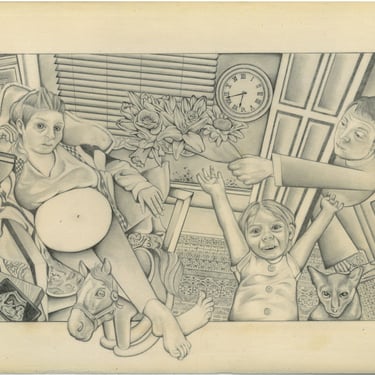

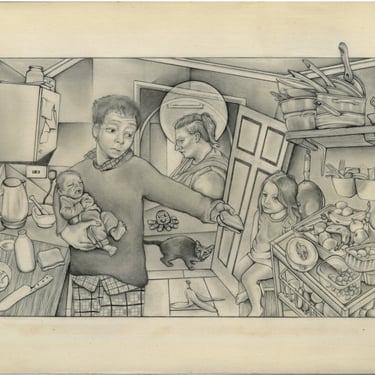
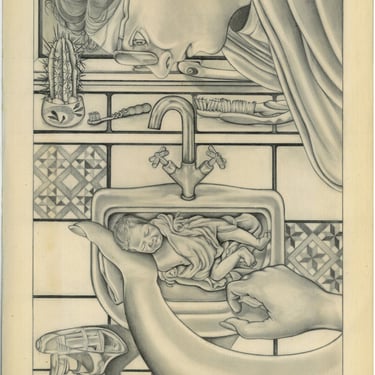
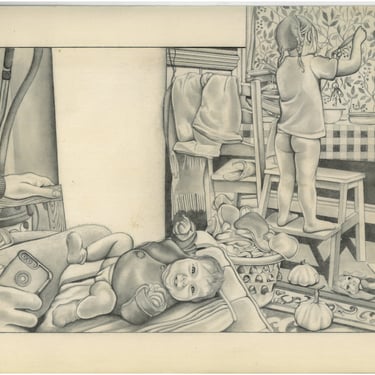

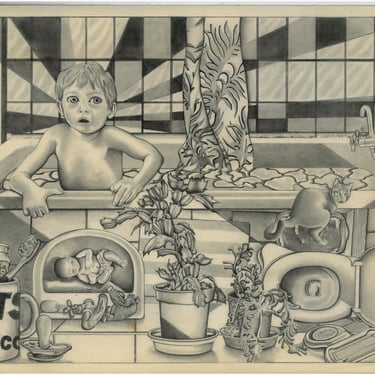
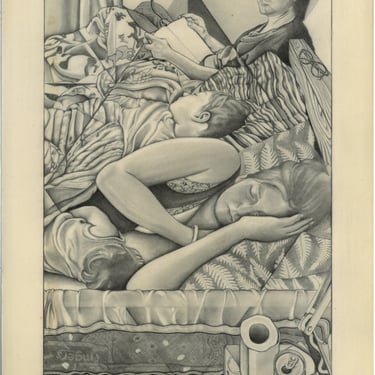
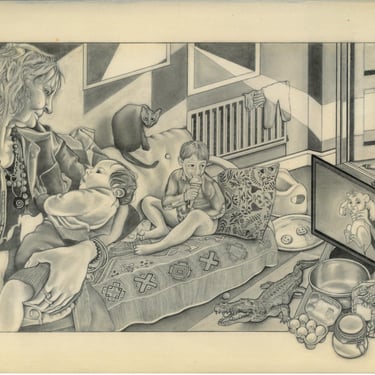
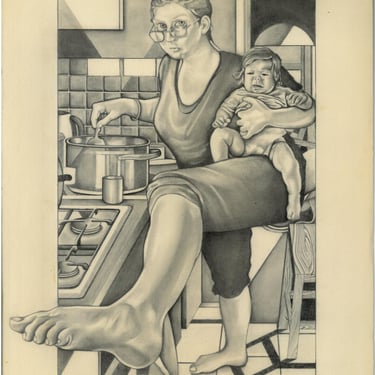
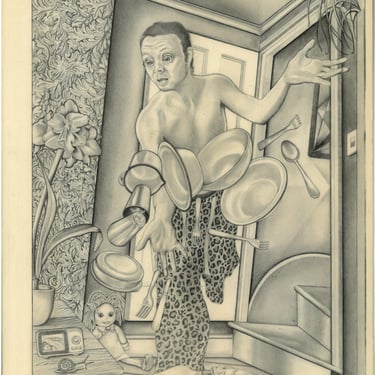
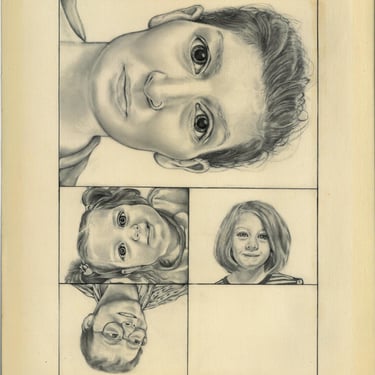
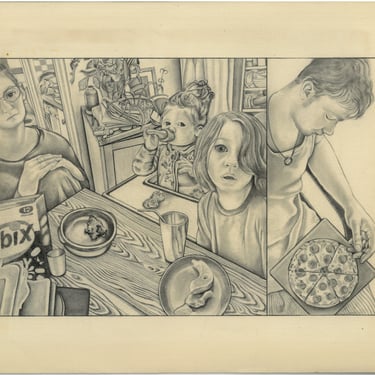
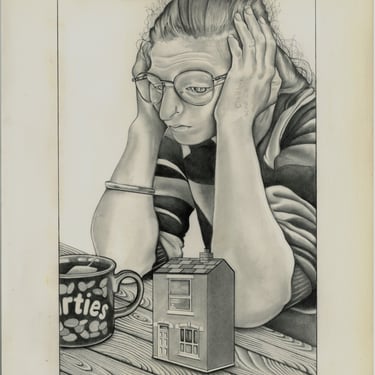
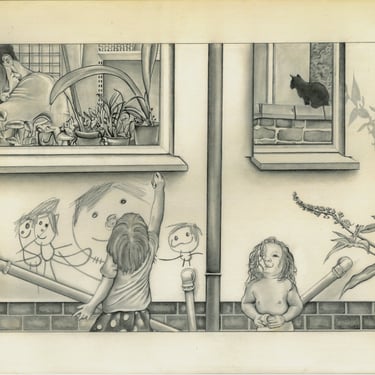

Reading from left to right on each row each work is titled:
I. An Annunciation
II. In My Beginning Is My End
III. The Sandwich
IV. Maiden Bath
V. Pumpkins
VI. The Allotment
VII. Bath time
VIII. Thursday, 8:45pm
IX. Nonny Day
X. Cooking
XI. A Catastrophe
XII. Skewed
XIII. Some Time Apart
XIV. Trapped
XV. In My End Is My Beginning
XVI. Take Care, Vincent...
All works were completed between January 2023 and July 2024 and are pencil on paper, measuring approx 28cm x 36cm unframe
Thus, when such things engage our ears and eyes
As bend the soul towards them totally,
Time passes, and we mark not how it flies
- Purgatorio, canto IV
